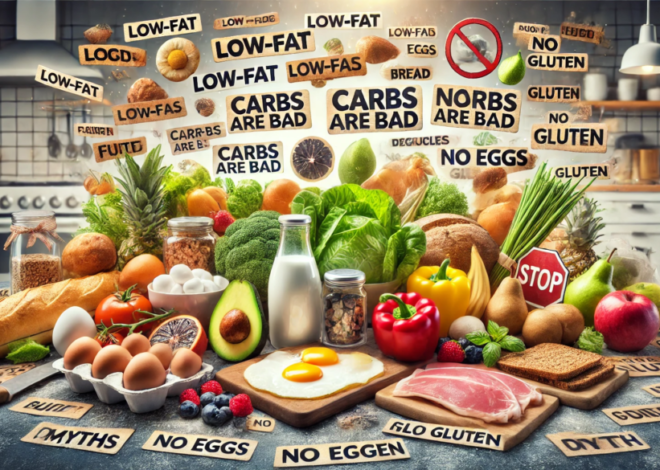
How to Include Dairy in a Low-Carb Diet: Smart Strategies
Dairy in a low-carb diet is often a point of confusion, yet it can enhance flavor and nutrition when included wisely. Many assume dairy products are off-limits due to their carb content, but strategic choices can keep your diet low-carb. This guide will explore effective ways to incorporate cheese, yogurt, and other dairy products without derailing your goals. Learn to select low-carb, high-fat options that fit seamlessly into your meals while satisfying your cravings. With these smart strategies, you can enjoy creamy textures and rich flavors that make your low-carb journey more enjoyable and sustainable.
Benefits of Including Dairy in a Low-Carb Diet
Incorporating dairy into a low-carb diet provides a blend of nutrients and flavors that enhance dietary satisfaction. Dairy products are not just versatile ingredients but also excellent sources of essential nutrients. Understanding the benefits of dairy can empower you to make informed dietary choices.
High Protein and Nutrient-Rich Dairy Options
Protein is crucial for muscle repair and growth, and many dairy products are rich in it. Products like Greek yogurt, cottage cheese, and hard cheeses such as cheddar are not only low in carbohydrates but are packed with proteins. These provide a satiating effect, keeping hunger at bay and maintaining energy levels throughout the day.
Dairy also offers a wealth of nutrients like calcium, vitamin D, and potassium. These nutrients support bone health, enhance muscle function, and contribute to overall wellness. A single serving of yogurt or a slice of cheese can significantly boost your nutritional intake without spiking your carb count.
Importance of Healthy Fats from Dairy
Fats play a vital role in a balanced diet, especially when reducing carbs. Dairy fats are predominantly saturated, but they include beneficial fatty acids like conjugated linoleic acid (CLA), which may promote fat loss and improve heart health. Whole milk and full-fat cheeses offer these healthful fats, contributing to prolonged satiety.
Choosing full-fat versions of dairy helps maintain energy levels and provides a creamy texture to meals, enhancing both taste and satisfaction. The healthy fats in dairy can support metabolic processes and hormone production, making them a valuable component of a low-carb diet.
Role of Dairy in Weight Management and Satiety
Dairy products can be powerful allies in weight management strategies. The protein and fat content help to control appetite, reducing the likelihood of overeating. Studies have demonstrated that individuals who consume dairy regularly tend to have better weight management outcomes.
Cheese, yogurt, and milk can be incorporated into meals and snacks to support satiety. These foods help stabilize blood sugar levels, preventing the spikes and crashes that lead to cravings. Dairy provides long-lasting energy and helps to create a feeling of fullness, essential for sticking to a low-carb lifestyle.
How to Choose Low-Carb Dairy Products
Selecting the right dairy products is key to reaping their health benefits while staying within your carb limits. Understanding which varieties are best suited for a low-carb diet can help maintain dietary goals without sacrificing taste or nutrition.
Best Low-Carb Cheese Varieties
Cheese lovers have several options when it comes to low-carb varieties. Hard cheeses like Parmesan, Romano, and Cheddar are excellent choices due to their minimal carbohydrate content. These cheeses add rich flavors to dishes without adding significant carbs.
Soft cheeses, such as Brie and Camembert, also fit well in a low-carb diet. They offer creamy textures and can be paired with vegetables or used as a topping for various meals. These cheeses provide a satisfying taste experience while adhering to low-carb principles.
Selecting Low-Carb Yogurt and Kefir
Yogurt and kefir are fermented dairy products that support gut health with their probiotic content. When selecting these, opt for unsweetened versions to avoid added sugars. Greek yogurt is particularly popular for its high protein content and lower carb levels.
Kefir, a cultured milk drink, offers similar benefits and can be used in smoothies or enjoyed on its own. Look for plain, full-fat varieties to keep carb counts low while still reaping the nutritional benefits these fermented products provide.
Exploring Low-Carb Milk Alternatives
Traditional milk can be higher in carbs, but alternatives like almond milk and coconut milk are lower in carbohydrates while providing a creamy base for beverages and recipes. These alternatives are often fortified with calcium and vitamin D, making them suitable substitutes.
Consider unsweetened versions of these milk alternatives to minimize carb intake further. They can be used in coffee, smoothies, or as a base for low-carb soups and sauces, ensuring that you enjoy the benefits without exceeding carb limits.
Practical Tips for Incorporating Dairy into a Low-Carb Lifestyle
Incorporating dairy into your low-carb diet can be both enjoyable and nutritious. With a variety of options available, dairy can easily become a staple ingredient in your meal planning and snacking routines.
Meal Planning with Dairy for Low-Carb Diets
Meal planning is essential for maintaining a balanced diet. Incorporating dairy into meals can add flavor and nutritional value. Start your day with a high-protein breakfast like eggs and cheese or a smoothie with Greek yogurt.
For lunch and dinner, consider adding cheese to salads or using creamy sauces made from dairy. These can enhance the taste of vegetables and proteins, making meals more satisfying. Dairy can also be used in low-carb casseroles and soups, providing creamy textures and rich flavors.
Creative Low-Carb Snacking Ideas with Dairy
Snacking doesn’t have to be off-limits on a low-carb diet. Dairy-based snacks can be both delicious and filling. Snack ideas include cheese sticks, yogurt parfaits with nuts and seeds, or cottage cheese with sliced cucumbers.
These snacks are convenient for on-the-go lifestyles and provide the nutrients needed to power through the day. They help control hunger and prevent unnecessary snacking on higher-carb options, maintaining dietary goals without sacrificing taste.
Balancing Dairy Intake with Other Low-Carb Foods
Dairy can be part of a balanced low-carb diet when consumed in moderation. Pairing dairy with other nutrient-dense foods like leafy greens, lean proteins, and healthy fats from avocados and nuts ensures a well-rounded diet.
Consider portion sizes and the overall balance of macronutrients in your meals. Dairy can enhance the taste and nutritional profile of dishes, but a balanced approach will ensure that you meet your health objectives while enjoying the benefits of a low-carb diet.
Conclusion
Dairy can be part of a low-carb diet if chosen carefully. Cheese, butter, and cream are generally low in carbohydrates and suitable for such diets. Some dairy products like milk and yogurt contain higher carb content due to lactose. It’s essential to check labels for added sugars in dairy products. Preference should be given to full-fat dairy for better satiety and nutrient absorption.
FAQ
How can dairy products fit into a low-carb diet plan?
Dairy can be a great addition to a low-carb diet. Focus on high-fat, low-carb options like cheese, cream, and butter. These products provide essential nutrients while keeping carb intake low. Balance them with vegetables and proteins for a well-rounded meal.
What are the best low-carb dairy options for weight loss?
Opt for cheese, Greek yogurt, and heavy cream. These items are low in carbohydrates and high in protein and healthy fats. They satisfy hunger and support weight loss goals without spiking blood sugar levels.
Is it possible to consume cheese on a low-carb diet?
Absolutely, cheese is a staple in low-carb diets. It’s low in carbs and high in fat, making it perfect for maintaining ketosis. Choose hard cheeses like cheddar and parmesan for the lowest carb counts.
What dairy foods should be avoided on a low-carb diet?
Avoid milk and flavored yogurts as they typically contain higher sugar levels. These can add unnecessary carbs to your diet. Opt instead for plant-based or unsweetened alternatives.
Are there lactose-free dairy options suitable for low-carb diets?
Lactose-free options like hard cheeses, lactose-free milk, and Greek yogurt can fit into a low-carb diet. These options provide essential nutrients without the lactose content that some may need to avoid.
How do full-fat vs. low-fat dairy compare in a low-carb diet?
Full-fat dairy often contains fewer carbs and is more satisfying, making it ideal for low-carb diets. Low-fat options can have added sugars, increasing carb content. Choose full-fat to maintain energy and control hunger.











